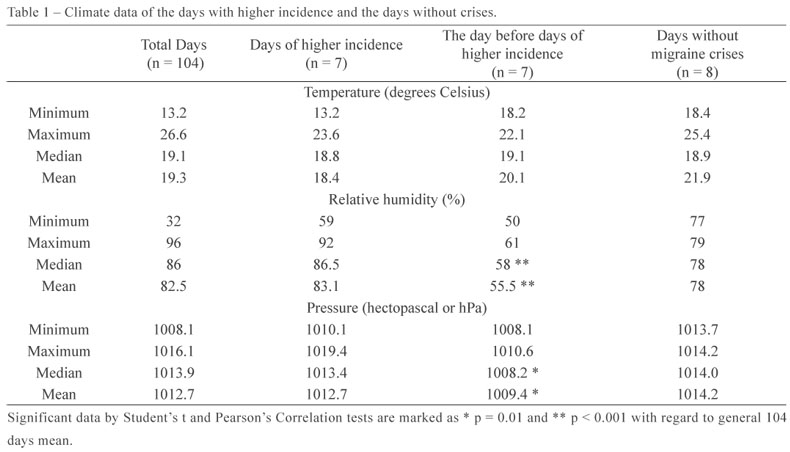BACKGROUND AND OBJECTIVES: Migraine is a highly prevalent primary headache affecting patients' quality of life. It may start in childhood or adolescence and follow patients throughout their lives. Triggering migraine crises factors, when identified, may help patients cope with external stimuli and may lead to a more effective treatment. This study aimed at observing whether climate changes in the region may be a potential triggering factor for migraine crises. METHOD: Prospective study including 60 migraine patients living in the city of Santos, SP, Brazil. Participants were selected according to migraine diagnostic criteria of the International Headache Society. Headache diary data were correlated to information supplied by Climatempo Santos. RESULTS: Forty-nine headache diaries comprising 104 days of prospective evaluation were developed and analyzed. Migraine crises were recorded in 96 days (92.3%). In 51 days, 10% or more of participants (> 5) presented migraine crises while in seven days 20% or more of participants (> 10) had migraine crises. Relative humidity was approximately 50% lower the day before the days of higher incidence of migraine crises (p < 0.001), when lower relative air pressure was also observed (p = 0.01). CONCLUSION: There has been correlation between low air pressure and low relative humidity and the prevalence of migraine crises the day after.
Climate; Headache; Migraine

